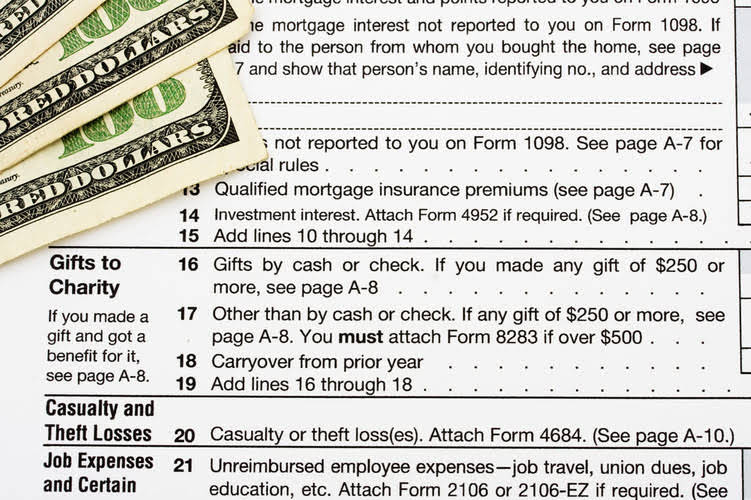
Except for minor differences due to rounding, answers to the exercises below will be the same whether they are computed using a financial calculator, computer software, PV tables, or formulas. An Annuity is a type of bond that offers a stream of periodic interest payments to the holder until the https://www.bookstime.com/ date of maturity. Many accounting applications related to the time value of money involve both single amounts and annuities. To demonstrate how to calculate the present value of an annuity, assume that you are offered an investment that pays $2,000 a year at the end of each of the next 10 years.

Everything You Need To Master Financial Modeling
- By using the time value of money concept and a few easy calculations, you’ll be able to conceptually pull back all those future payments to understand what they’re worth now.
- Present value of an annuity refers to how much money must be invested today in order to guarantee the payout you want in the future.
- But annuities can also be more of a general concept that describes anything that’s broken up into a series of payments.
- Suppose you want to determine the value today of receiving $1.00 at the end of each of the next 4 years.
- The discount rate is an assumed rate of return or interest rate that is used to determine the present value of future payments.
- If your annuity promises you a $50,000 lump sum payment in the future, then the present value would be that $50,000 minus the proposed rate of return on your money.
The offers that appear on this site are from companies that compensate us. But this compensation does not influence the information we publish, or the reviews that you see on this site. We do not include the universe of companies or financial offers that may be available to you. “Essentially, a sum of money’s value depends on how long you must wait to use it; the sooner you can use it, the more valuable it is,” Harvard Business School says. Connect with our experts for a comprehensive range of annuity options and guidance. In conclusion, the annuity bond has a yield of 5.0% under either scenario.

Invest Like Todd
Many people like to use a table with 60 periods (or 60 rows) but here we’re going with 5 here instead, just to make it easy. The first four cash flows form an annuity and the final term is the present value of a single sum. Let us use the present value of an annuity formulas to find price of treasury bond that has 2 years till maturity. The bond has a par value of $100 and coupon rate of 3% thereby paying $1.5 coupon after each six-month period. Where PMT is the periodic payment in annuity, r is the annual percentage interest rate, n is the number of years between time 0 and the relevant payment date and m is the number of annuity payments per year. As discussed above, an annuity table helps you determine the present value of an annuity.
- This information allows you to make informed decisions about what steps to take to plan for your retirement.
- To make the analysis easier, let’s assume that the cash flows are generated at the end of each year.
- John Egan is a veteran personal finance writer whose work has been published by outlets such as Bankrate, Experian, Newsweek Vault and Investopedia.
- Luckily, an even better option is right here for you — present value of annuity tables.
- The future value of an annuity refers to how much money you’ll get in the future based on the rate of return, or discount rate.
- Real estate investors also use the Present Value of Annuity Calculator when buying and selling mortgages.
Ask Any Financial Question
The present value of an annuity is the current value of future payments from an annuity, given a specified rate of return, or discount rate. The present value of an annuity refers to how much money would be needed today to fund a series of future annuity payments. Or, put another way, it’s the sum that must be invested now to guarantee a desired payment in the future. These recurring or ongoing payments are technically referred to as annuities (not to be confused with the financial product called an annuity, though the two are related). An annuity table is a tool used mostly by accounting, insurance or other financial professionals to determine the present value of an annuity.
Determining the Annuity Payment
- Where i is the interest rate per period and n is the total number of periods with compounding occurring once per period.
- Our team of reviewers are established professionals with decades of experience in areas of personal finance and hold many advanced degrees and certifications.
- The FV of money is also calculated using a discount rate, but extends into the future.
- Annuities can help you plan for your retirement by providing a guaranteed source of income for you and your family when you reach your golden years.
- The value today of a series of equal payments or receipts to be made or received on specified future dates is called the present value of an annuity.
- The present value of annuity calculator is a handy tool that helps you to find the value of a series of equal future cash flows over a given time.
- Suppose that Black Lighting Co. purchased a new printing press for $100,000.
As with the future value of an annuity, the receipts or payments are made in the future. Present value is the value today, where future value relates to accumulated future value. The present value of an annuity refers to the present value of a series of future promises to pay or receive an annuity at a specified interest rate. In this case, the person should choose the annuity due option because it is worth $27,518 more than the $650,000 lump sum. There is a separate table for the present value of an annuity due, and it will give you the correct factor based on the second formula.

It calculates the current amount of money you’d need to invest today to generate a stream of future payments, considering a specific interest rate. To determine an individual cash flow, or annuity factor, by using this table, you would look across the top row for the number of periods and down the left side for the interest (or discount) rate. Entering these values in an equation yields the present value of an annuity.

The term “present value” refers to an individual cash flow at one point in time, whereas the term “annuity” is used more generally to refer to a series of cash flows. The present value of an annuity is a calculation used to determine the current worth or cost of a fixed stream of future payments. In contrast, the annuity factor is used to calculate how much money must be invested at a given rate of return over a certain period for it to accumulate to a specific sum in the future.
- Similarly, the formula for calculating the present value of an annuity due takes into account the fact that payments are made at the beginning rather than the end of each period.
- It is important to distinguish between the future value and the present value of an annuity.
- “Essentially, a sum of money’s value depends on how long you must wait to use it; the sooner you can use it, the more valuable it is,” Harvard Business School says.
- Now as that you know all the financial terms appearing in this calculator, let’s do a quick example of how the annuity formulas can be applied.
- Future value (FV) is the value of a current asset at a future date based on an assumed rate of growth.
- In reality, interest accumulation might differ slightly depending on how often interest is compounded.
- If you’re looking for an investment strategy that goes beyond “buy and hold” while controlling risk and requiring as little as 30 minutes a month to manage, this is the answer.
Why Is Future Value (FV) Important to investors?

The discount rate reflects the time value of money, while the interest rate applied to the annuity payments reflects the cost of borrowing or the return earned on the investment. For example, if an individual could earn a 5% return by investing in a high-quality corporate bond, they might use a 5% discount rate when calculating the present value of an annuity. The smallest discount rate used in these calculations is the risk-free rate of return. Treasury bonds are generally considered to be the closest thing to a risk-free investment, so their return is often used for this purpose. The discount rate is a key factor in calculating the present value of an annuity.
Is an Annuity Table the Best Way to Determine Present Value?
However, external economic factors, such as inflation, can adversely affect the future value of the asset by eroding its value. The reason the values are higher is that payments made at the beginning of the period have more time to earn interest. For example, if the $1,000 was invested on present value ordinary annuity table January 1 rather than January 31, it would have an additional month to grow. In contrast to the future value calculation, a present value (PV) calculation tells you how much money would be required now to produce a series of payments in the future, again assuming a set interest rate.
An ordinary annuity is a series of equal payments made at the end of consecutive periods over a fixed length of time. This variance in when the payments are made results in different present and future value calculations. An annuity table provides a factor, based on time, and a discount rate (interest rate) by which an annuity payment can be multiplied to determine its present value.